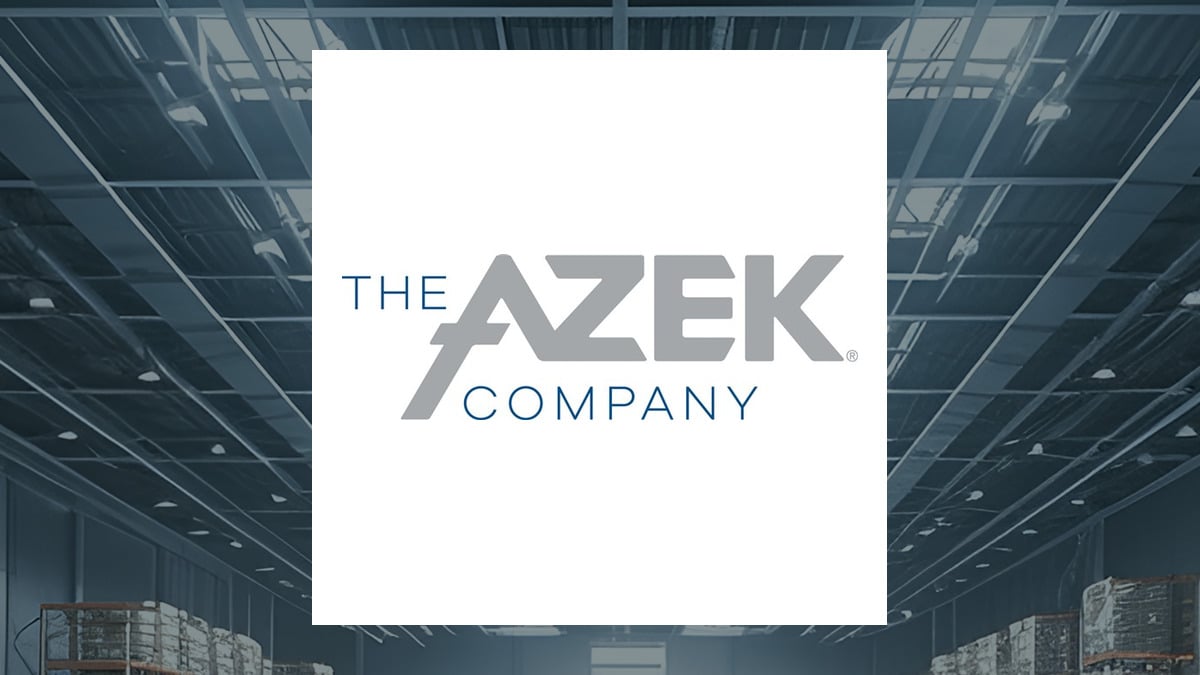
In a world of attention seekers and inflated egos, Neil Rossy is decidedly discreet. You’d be hard-pressed to find a Canadian chief executive who keeps a lower profile—never mind one running a public company worth $40 billion on the Toronto Stock Exchange. Rossy doesn’t speak to journalists outside annual meetings, doesn’t do speeches or business luncheons.
Hell, when he took over as CEO from his father, Larry, in 2016, the company’s communications person had to wheedle him into agreeing to headshot photos for the official corporate record. And yet, here he is, in all his business-casual informality: The 54-year-old Montreal magician behind discount variety chain Dollarama Inc. He’s approachable and articulate, sporting a neatly trimmed beard and, on this day, stylish green Adidas sneakers.
His dress shirt is untucked, and when he smiles, you get a flash of bright pearly whites. A cheeky coffee mug on his desk reads “I am 49+” and features the doodle of a hand raising a middle finger. It’s late September, and Rossy has invited us into his inner sanctum at corporate headquarters, a CEO suite so cluttered with household goods it would make a hoarder smile.
It’s the first such interview he’s ever done. If he had reservations before about opening up—and he had plenty, we’re told—he’s not showing them now. He seems perfectly ready for his moment in the spotlight.
And why not? As Dollarama CEO for eight years now, he’s at the top of his retail game. Since he’s been in charge, the company’s net profit has tripled to $1 billion, and sales have more than doubled to $5.8 billion.
Meanwhile, the share price has soared, from $30 to about $141, even accounting for the stock split in 2018. In sum: It’s about as sweet for an investor as a Werther’s bonbon. There’s lots of potential, too.
Dollarama is pushing ahead with a steady stream of new store openings in Canada, while slowly expanding into new territory abroad. This is a business nurtured over more than a century by four generations of Rossy family smarts and hard work. It was Neil’s father who correctly read the retail winds and adopted the dollar-store concept.
But it’s the son who sharpened it and planted the company onto fresh ground as it balloons in size. This is now his story to tell. In an industry littered with the carcasses of failed retailers, Dollarama stands apart.
Year after year, it continues to defy predictions that it will hit its sales peak in Canada, just as its bright green and yellow colours continue to worm ever more deeply into the Canuck consciousness. The company has 1,600 stores now, with plans for 2,000 by 2031. You’ll find them in the basement shopping concourses of fancy office towers just as you’ll find them in small towns and suburbs.
A Leger Marketing survey for the Bank of Montreal in June found 70% of Canadians visit a Dollarama store at least once a month, while 29% shop there at least once a week. Proximity is key: 85% of Canadians live 10 kilometres or less from a Dollarama outlet. Whether they’re flush with cash or penny-pinching when they walk through the door, the retailer just seems to have a knack for offering things they want at a price they can’t refuse.
And yet, Rossy isn’t sitting here all smug and satisfied. There are places where the Dollarama formula can work every bit as well as it does in Canada, he says, and he wants to capitalize on that as he plots the future. The company has already branched out, plowing manpower and money into a Dollarama clone in Latin America called Dollarcity.
Dollarama has owned a majority stake in the retailer since 2019, and it’s investing big in its expansion, with plans to double its store count to 1,050 in Colombia, Guatemala, El Salvador and Peru over the next five years. A launch into Mexico will take place in 2026, and the partnership deal includes options to open in five other Latin American countries. Dollarama is analyzing expansion onto other continents, too, Rossy says—whether through partnerships, opening new stores on its own or acquisitions.
“We’ve been looking at the rest of the world, thinking about opportunities,” he says. “Mexico will be a new foray into a huge country with great upside. But I would tell you, I feel that at this point we can, we could, do even more.
” Stretching the length of a glass-windowed facade in Rossy’s office at Dollarama headquarters is a collection of curiosities that he calls The Wall of Shame. On a table alongside photos of his wife and four kids are dozens of failed products—items Dollarama was pitched on but never bought, as well as one or two that made it onto the shelves by mistake, to the CEO’s great distress. “This, for example: total nightmare,” he says, holding up a small blue towel with a Russian flag, green army tank and some lettering printed on it.
“We buy blue towels. From a vendor we’ve been buying from forever. We buy many colours.
Blue is one of them. And right in the middle of the Ukrainian war, I started getting pictures of this from the stores. So I was like, ‘What the hell is that?’” The vendor had received an order from a Russian military regiment and, by a stroke of bad luck, a dozen or two made it into Dollarama’s shipment.
Rossy immediately got on the phone. “I had every district manager running to all their stores to look through this. I was like, ‘If one of those towels gets out, I’m never going to hear the end of it.
’ So it made it to The Wall of Shame.” Rossy loves merchandise. He slips easily into explanations of retail trends during a tour of the company’s basement laboratory at HQ, a messier version of a real store that serves as a library for purchases present and past.
This is where 12 senior buyers verify goods under their purview, and other staff test-shop concepts like new hooks or shelving. It’s also where they prepare layouts to show customers, like an end-of-aisle display they’re currently doing for chocolate maker Mars Wrigley. In the company’s basement laboratory at HQ, a version of a real store serves as a library for present and past.
This is where 12 senior buyers verify goods under their purview, prepare layouts to show customers and other staff test-shop concepts like new hooks or shelving. Rossy, by the way, is one of those senior buyers. He regularly leads Dollarama buying trips to China and the United States, spending 1.
5 months a year in Asia alone. He claims that if a stranger on the street were to show him Dollarama’s entire inventory mixed with other goods, he’d be able to identify 90% of his offerings. If you think he’s a nepo baby, you’d be wrong.
The moment Larry Rossy signalled he was ready to hand over command after a 40-year run, the board launched a formal selection process that sought out both internal and external contenders. Neil, who’d joined Dollarama after graduating from Queen’s University and had done almost everything there was to do at the retailer, was by far the best candidate, says chair Steve Gunn. It wasn’t even close.
Officially, Rossy’s title at the time was chief merchandise officer. But the reality was that he and a small circle of senior executives were already part of every decision at the highest level—the result of his father relishing the opinions of his lieutenants on everything of importance. Neil was offered the job.
But he didn’t say yes at first. He knew his father still loved the work—”it made him happy” even as he began confronting health challenges, he says. And the son was perfectly content in a support role.
A CEO title was “not something I need as a person,” he says. Soon, though, Larry’s signal became more urgent, and Neil’s empathy and self-effacement gave way. “If I said, ‘Spot the CEO of Dollarama’ at a cocktail party, he’d be the last guy you choose,” says Gunn, because he’s humble, grounded and way more interested in finding out about you than talking about himself.
“He didn’t want the fame or the glory. But not only does he know every aspect of the company, he’s also the keeper of the culture.” – Neil Rossy, CEO of Dollarama Truth is, Neil Rossy has been part of his family’s retailing history since he was a kid.
Before Dollarama was founded in 1992, the clan ran a chain of variety shops operating under the S. Rossy Inc. name in Montreal.
Rossy worked in the stores and warehouse, and one summer he handled deliveries, getting stuck on Montreal’s busy Decarie Expressway when the engine on an old red cube truck blew up. Later, he emptied cargo containers (which remains the worst and hardest job at Dollarama to this day, he says). “Those were all good lessons.
” Over time, he learned first-hand the ingredients of Dollarama’s magic sauce. And he’s cooked it to perfection, much like the homemade jam he now makes at night. (“I’m not a good sleeper,” he says.
) The recipe goes something like this: The new CEO made more than a few moves of his own, however. He expanded the company’s lone distribution centre, increasing capacity by 50%. He rolled out credit card payments for the first time, even though much of Dollarama’s store assortment could often be bought with pocket change.
He launched an e-commerce website that sells select merchandise by the case. He then steered through the COVID-19 crisis, sacrificing profit in pursuit of a greater societal good. Later, he raised Dollarama’s price points to $5 to counter inflation, boosting his buying power in a bid to offer even more appealing merchandise.
It has worked. Over the past few years, sales productivity per Dollarama store has meaningfully increased as a result of market-share gains from other retailers, according to BMO analyst Tamy Chen. All of this without spending a cent on advertising, although you could argue the company doesn’t need it—there are plenty of shoppers on TikTok offering tips on the latest Dollarama deals.
Rossy considers “everyone” his competition, because his are variety stores that “nibble a little bit from everyone’s plate,” from stationery to hardware. He pays most attention to the Goliath of the industry, Walmart, but watches all the others, too. And he says one reason Dollarama is beating its dollar-store competition (same-store sales growth in the latest quarter at Dollarama was 4.
7%, versus 1.3% at Dollar Tree) is simply because of what’s on the shelves. Dollarama has added more brand-name goods to the mix in recent years.
That, in turn, has helped attract more customers, including those who would never buy an item not made by a well-known manufacturer. Meanwhile, it steadfastly refuses to jump into refrigerated food, a mistake Rossy says his U.S.
-based rivals have made. “They went down that path hard and fast. And it’s destroyed their gross-margin percentages.
” Making sure shoppers in Canada feel like they’re getting their money’s worth remains the CEO’s primary focus. But he’s also laying the groundwork for a future where Dollarama taps out here. That won’t happen any time soon: Veritas Investment Research analyst Kathleen Wong says the company has plenty of runway left, adding it’s still generating robust same-store sales growth while opening new locations.
Even if Dollarama and Dollar Tree, its main rival, hit their targets for new store openings by 2030, Canada will still be underserved as measured by dollar stores per population versus the U.S. But it’s never been Rossy’s style nor strategy to wait until the last minute.
The company has its Canadian business under control, he says. And now’s the time to take things further internationally. “My father was more reticent to go abroad, worrying more that we’d lose focus on Canada.
And I was more convinced that we could do both,” he says. “I’m not currently stressed in any way about Canada’s potential future growth. And certainly with immigration and other things, who knows where that’ll end? But I would tell you that no country grows infinitely forever.
That’s just a fact.” When Larry Rossy decided to push into dollar store retailing, his son led the advance party. In the spring of 1992, he dispatched Neil to Matane, a seaside village in Quebec’s Gaspé region known for its shrimp, to set up a small store selling everything at one low price: $1.
A family friend had suggested it, saying no one would ever know if the effort failed. Instead, it took off like wildfire. They expanded under the name Dollarama and, by the third year, there were more Dollarama outlets than Rossy outlets.
All stores were soon brought under the Dollarama banner. “We started the business in a small Quebec town on the south shore of the St. Lawrence because my father was worried about how it might impact the Rossy name,” Neil says.
“A lot of people laugh when we tell that story,” but it’s important because Dollarama is now approaching international expansion in the same way, he says: Start small and test the concept. “We went to a tiny little country that had the highest homicide rate in the world,” Rossy says, referring to the seemingly absurd notion of setting up in El Salvador, a nation of six million known more for volcanoes than its profit potential. “We did it for a bunch of reasons that we thought made sense at the time.
And I’m glad we did.” The seeds of Dollarama’s international journey were sewn in 2004, at a meeting of investors at Bain Capital, the Boston private equity fund that was, for a time, Dollarama’s controlling shareholder. A Salvadorian businessman named Marco Baldocchi, who’d done well in call centres, aviation and real estate, was blown away by Dollarama’s product offerings and later asked the Rossy clan if they’d be interested in exporting their model south.
They said no. The family had received other such requests over the years but “didn’t have the bandwith” to devote to a proper expansion, Rossy says. Baldocchi launched the business anyway.
With little more than a hunch and with no retail background, he started a Dollarama copy-cat called Dollarcity and built up a chain of about 20 stores. He figured Latin Americans used to buying in open-air markets would welcome a more formal shopping experience, with air-conditioned stores. Dollarcity did okay but not great, and Baldocchi says he eventually sought out the Rossys again—this time more for ideas and insight than with any expectations of a tie-up.
Dollarama executives flew down to El Salvador and quickly realized that while Baldocchi had the guts of a good business, they could do exponentially better. One thing led to another. “We liked the guy a lot, and I thought it was super interesting,” Rossy says.
“So we started to work on thinking about how and what systems we’d put in place.” In 2013, the Rossys struck a commercial partnership with Baldocchi, starting with El Salvador and Guatemala. The Canadians would share Dollarama’s processes, technology and access to their global supply chain, while Baldocchi ran the business.
If the initial countries were successful, they’d do Colombia next because it’s a much bigger market. It took off. Dollarama bought a 50.
1% position in Dollarcity in 2019, and the partners added a fourth country, Peru, shortly after. Mr. Rossy says Dollarama has its Canadian business under control, and now’s the time to take things further internationally.
To some extent, says Baldocchi, “It was a bet on me.” He says he initially thought his lack of a retail background was a strike against him. In time, he began to realize that the Rossys considered that an asset.
“We taught him how to be a retailer,” Rossy says. In June, Dollarama announced it would boost its stake in Dollarcity to 60.1%, with an option to buy another 9.
9%. And it struck a new deal with Baldocchi to expand into Mexico. Dollarama will take an 80.
1% stake in that business, with an option to buy another 5% by the end of 2027. The Canadian company’s equity pickup from Dollarcity’s annual earnings for the last fiscal year was $75 million plus dividends, triple what it was five years earlier. BMO’s Chen projects that could increase to $300 million by 2028, even without factoring in Mexico.
Latin America is becoming an ever-more-meaningful component of Dollarama earnings, the analyst says. TD Cowen analysts Brian Morrison and Andrew Lopez visited Dollarcity in El Salvador this past summer. They found a chain that was strikingly similar to what we know here.
“We would even go as far as to suggest it’s cleaner, more welcoming and more organized than its Canadian counterpart,” they said. One weird thing, though: The stores accepted bitcoin, a function of the support for the digital currency from El Savador’s government. What’s next? More expansion, Rossy says, possibly further afield.
“We’ve looked at Europe. We’ve looked at Australia. We’ve looked at many parts of the world,” he says, adding it’s only considering stable regions with growth potential where it believes the company’s core model could be reproduced.
It really has to have “a high probability of accepting what we do fairly close to the way we do it, or we’re not thinking about it,” he says. “I don’t want to reinvent the wheel. Our wheel spins very nicely, and I would like to use that exact same wheel to keep rolling across other countries.
” The company is scouting for new partnerships as well as greenfield investments, where it would build new stores and distribution centres in other countries. It’s also weighing opportunities to buy into existing businesses, like it did with Dollarcity but on a bigger scale, targeting companies with an obvious mismatch: the right real estate but the wrong ops, or the right real estate but the wrong management team. J.
P. Towner, Dollarama’s former finance chief, remembers visiting one country the company thought could be a good fit. To get a feel for its potential and dynamics, he and his former colleagues hit the streets.
“Over four days, we walked through 100-plus stores across multiple cities and hauled back boxes filled to the brim with goods,” he says. “Neil wasn’t just there. He was leading the way and never skipped a beat.
” – Neil Rossy, CEO of Dollarama Rossy is the kind of CEO who likes to dig into the details. It’s his way of keeping the job interesting and rewarding. It also means that the door to his office—flanked by a piece of art depicting a grey rabbit running at full speed with the pin of a grenade in its mouth—is almost always open.
“People come in that door every 15 minutes or 10 minutes or five minutes, depending on the day, with something to discuss or something for me to think about,” he says. These days, his mind is spinning. Most Canadians have no idea how much more complex retailing has become, he says.
And for a company whose business model is anchored in keeping things simple and standarized, life is growing tougher. Take, for example “shelf talkers,” the small printed tickets attached to shelves that are used to promote a product. Dollarama used to have one shelf-talker system for all its stores.
But now, every province has instituted their own regulatory specifications, each with different rules on where to put the price, fees and other information. Municipalities sometimes have their own rules, and there are differerent rules for different products. Batteries aren’t the same as earphones, which aren’t the same as anything made of wood.
Dollarama has an entire department of “really smart people” whose job is to manage these changes and figure out the printing. “I just feel like retailers are spending a lot less time on retail and much more time on things that add no value to the customer,” Rossy says. There are far broader issues to consider, too, like the company’s environmental footprint.
If there’s a perception that Dollarama is a purveyor of cheap, throw-away goods that’s on the wrong side of the climate and sustainability crisis, the reality is more complex. Until recently, Dollarama had “very little disclosure and not a lot of capacity internally” in addressing climate risk, says Kevin Thomas of the Shareholder Association for Research & Education (SHARE), an investor advocacy group. Last year, it called on Dollarama to set interim and long-term targets to reduce greenhouse gas emissions in line with the Paris Agreement.
Among the shortcomings SHARE identified: The retailer had no time-bound commitment to outline and reduce Scope 3 emissions (those tied to vendors and other parts of the supply chain not directly under its control). That’s a problem, because those likely make up the bulk of its emissions, Thomas says. That’s changing.
In its latest ESG report, Dollarama says its total Scope 1 and 2 emissions for fiscal 2024 were 52,237 tonnes of CO2 equivalent. And it’s identified the Scope 3 pieces that are most relevant to its business, vowing to report on those next year. The company is focused on reducing the intensity of its emissions per store instead of adopting an absolute emissions reduction target, which it says is better aligned with its growth plans.
Thomas wants to see total emissions fall but says the company is “taking steps to get there.” Having quality products is a big piece of the environment puzzle, Rossy explains. “Our responsibility is to make sure that we’re not selling garbage,” he says.
“I’ll bring stuff home from the kitchen department and cook with it. I’ll bring home toys and build them or get my kids to play with them,” he says. “I’m very, very focused—and have always been, since I was a kid—on making sure that whatever somebody’s spending their money on is good.
” Analysts still talk about the time that Larry Rossy complained on an earnings call about the quality of toothpicks Dollarama was selling. He said they weren’t as well-sanded as he would like and that he’d sometimes get a splinter in his gums. In fact, there’s a range of goods that are much harder to execute inexpensively, Neil says, including toys.
And that’s why they’re among the product categories that have moved up in price point. The CEO doesn’t want to sell playthings that last only for a few plays. He also wants to minimize garbage.
When reporters from Les Coops de L’information published an investigative report earlier this year detailing what they said were sizable quantities of candy, cards and other items found in dumpsters behind Dollarama stores, the company responded by saying it devotes considerable energy to making sure it minimizes the loss of goods. Addressing the matter now, Rossy says the percentage of goods thrown out is “infinitesimally small” and that everything reported to be in the garbage, other than the stuff that was expired, “should never have been there.” The story was perplexing, Rossy says.
But it prompted him to make at least one immediate change: This year after Halloween, the retailer did two markdowns for its candy and chocolates, the last being almost free, in a bid to avoid having to discard it. Dollarama now has 1,600 stores, with plans for 2,000 by 2031. They can be found everywhere from the basement shopping concourses of fancy office towers, to small towns and suburban strip malls.
Rossy thrives when working on these real-world improvements. Gunn remembers when the CEO walked into a board meeting one day proud as punch about a new handheld device he’d come up with for district managers doing store checks. The machine contained software with key metrics on how each Dollarama store was performing, allowing supervisors to offer praise or counsel, and store staff to specify what needs they had on maintenance and other matters.
“The company’s just gotten that much better at executing,” says Gunn. “Just a series of little steps.” Rossy loves a good project.
And he loves to experiment. At home with family, he doesn’t just make a chicken for supper. He makes several chickens different ways to see which one they like best.
At work, it’s study available IT systems and use that information, often to create proprietary tools. Rossy recently bought Mont Glen, a former ski resort in the Eastern Townships, and he’s been learning how to clean up the forest and get the old groomers working again. Living at the lodge and dealing with snow piled high has also led him to introduce a new Dollarama product: six-foot heavy-duty driveway markers.
Cost: $4.75 each. It’s just one example of many showing the business is never truly out of his mind, even during down time.
“Neil’s a very intense guy” and not the most sociable person, says Martin-Pierre Roussel, a longtime friend and banker at National Bank of Canada. “He likes to compete, he likes to be intense. And he approaches everything similar to work—in a very, very detailed fashion.
” The two travel together several times a year on fly fishing trips. Rossy has done “a ton of reading” on fishing, and constantly tries different baits and other things to gain an edge, says Roussel. When Roussel is slow to move downriver, Rossy often asks the guide to give him a nudge (covering more water increases your chances of catching a fish).
And when the others in the group go for their regular afternoon naps, Rossy often ducks out to the supply shop instead. “He’ll be gone sometimes for an hour and a half,” Roussel says. “And he’ll buy something most of the time just to encourage the retailer, even if he doesn’t need it.
He’ll do his shopping, see everything. He’s taking in all the information at all times.” Over the past few years, sales productivity per Dollarama store has meaningfully increased as a result of market-share gains from other retailers, without spending a cent on advertising.
Dollarama had grown into a chain of 335 stores when, in 2004, it sold an 80% stake in the business to a group of funds controlled by Bain for a cool $1 billion. Now, with Bain long cashed out, it says a lot about Rossy and his leadership chops that he’s still in charge. His family and company management own about 2% of the public share float, but to investors, there’s still no one better to lead.
The trouble of knowing every aspect of the business in detail, says Gunn, is, can you delegate? “If you had asked me eight or 10 years ago if he has a weakness, I’d say that because he’s so good at every aspect, does he take on too much himself rather than trying to teach others to do it?” Rossy is aware of this issue—and the potential for it to become a major problem if the company doesn’t develop its bench strength. He says he’s spent considerable effort in recent years to hire young people—and they have largely been young people—who’ll grow into the next generation of leaders. His own kids, who range in age from 16 to 24, have their own passions and so far haven’t shown much interest in retailing.
But he’s convinced Dollarama’s culture can be sustained regardless. “It makes me sad to think that we’ve been in retail since 1907 and that there might not be a family member here when I retire,” says Rossy. “But a major piece of what I’m responsible to make sure of is that this is not a Rossy thing.
.. The culture piece to me is super important.
It just doesn’t have to be a Rossy culture piece. It has to be a culture piece that’s in line with the way we’ve built the business.” Your time is valuable.
Have the Top Business Headlines newsletter conveniently delivered to your inbox in the morning or evening. Sign up today ..














